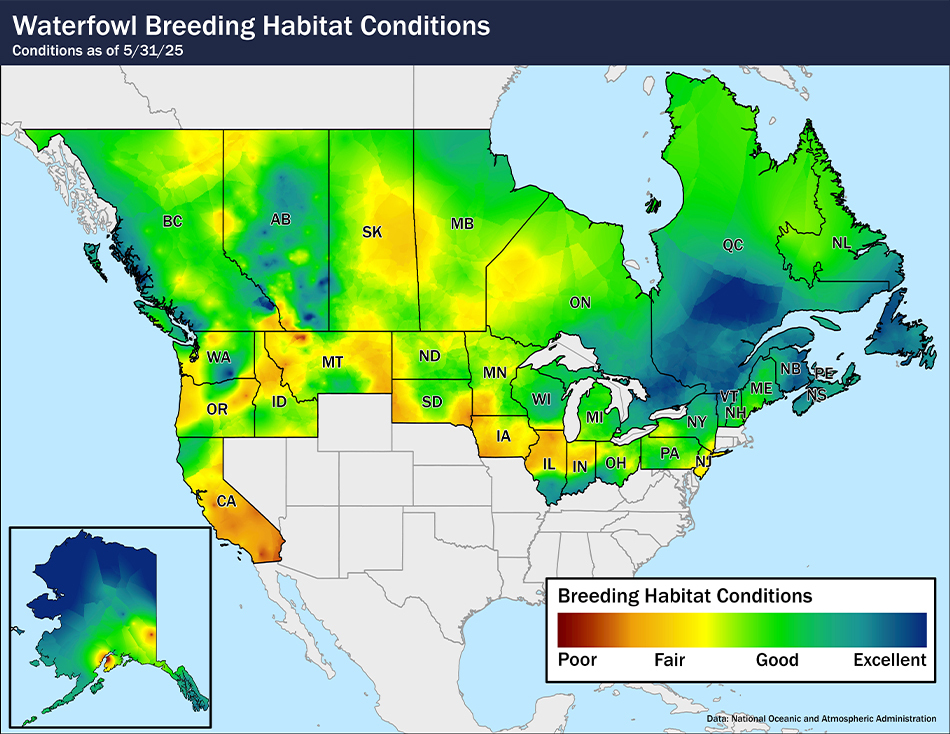
Waterfowl Breeding Habitat Conditions Update As of May 31, 2025
Widespread rains during May—a critical month for duck production—brought welcome relief to much of the prairie pothole region, particularly in parts of North Dakota and south-central and northern South Dakota. This went far in helping offset the poor conditions for breeding ducks reported in our April map, as it recharged seasonal wetlands and boosted the prospects for nesting and renesting efforts.
However, the increased moisture probably came too late for a large portion of early spring migrants to settle in the Dakotas. When most of these birds went through, the dry conditions led many of them to gamble on better habitat to the north and west. Further, conditions remain fairly inconsistent in certain regions of the Dakotas, because while the widespread rains certainly helped, some areas were so dry that most of the rain quickly seeped into the ground rather than filling wetlands. While driving through North Dakota on a recent trip to Manitoba, I observed some stretches where every seasonal pond was full and some stretches where no seasonal ponds had water.
The surrounding states have been less fortunate: Drier conditions continue to linger across eastern Montana, southwestern Minnesota, and Iowa, offering scant support to nesting ducks this spring.
In Canada, Alberta stands out as a bright spot, and its vast prairie and parkland habitats appear poised to drive a strong breeding effort. Hopefully, the hundreds of miles of excellent, very wet conditions it offers are enough to help breeding mallards, pintails, and wigeon offset the less favorable wetland availability to the south. Meanwhile, the PPR portions of Saskatchewan and Manitoba (well south of the areas hardest hit by recent wildfires) have held steady, with average to slightly above-average conditions to support duck production.
Out West, the Pacific Flyway saw modest gains in habitat quality, but nowhere near the rebound needed to support robust duck production—a particular problem for California’s mallard population. However, central Washington and most of British Columbia are in great shape. And Alaska's river deltas, including the critical Yukon region—a major source of Pacific Flyway pintails and other breeding ducks—are in superb shape.
The East has received repeated soakings in recent weeks. The resulting surge in breeding habitat conditions helped bring Pennsylvania, New York, and the New England states closer to the good-to-excellent conditions already established across Ontario, Quebec, and the Maritime provinces. This should certainly benefit eastern-breeding mallards, black ducks, and green-winged teal. —Mike Buxton
